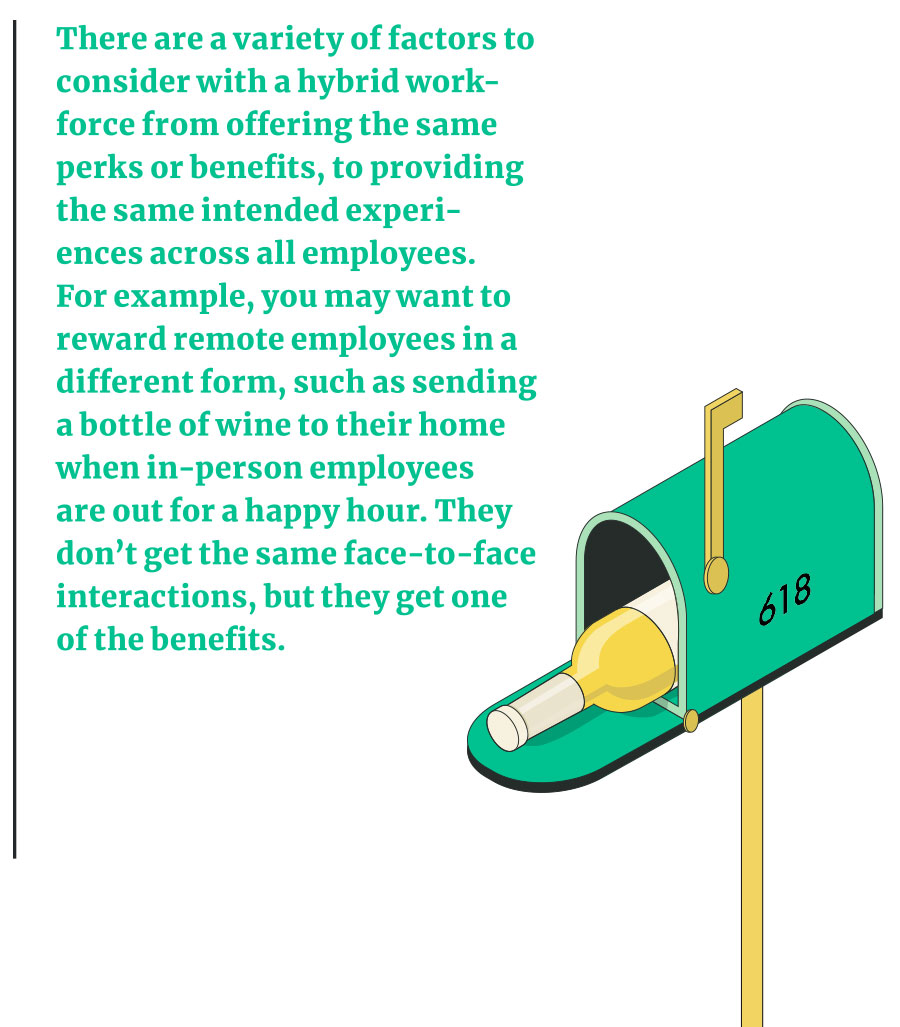Employers have been on a roller coaster for the last three years reacting to the changes encountered by the pandemic and trying to determine what is best for business and for their people. The pandemic has disrupted the employee work environment and shifted what employees value in their company. Some companies have been successful in addressing the change and realizing they need to go directly to employees to understand what they actually want. Other companies haven’t been as successful, with leadership dictating decisions and pushing changes onto employees.
Do your employees describe your company the way you do? If not, then you likely need to redefine your Employee Value Proposition (EVP) based on employee needs.
Clearly define EVP in a hybrid work environment
Why is it so important to define an EVP?
As an employer, you need to understand what your employees need and value. You should recognize that there can be multiple types of employees, who may value different things in different ways. Addressing different employees’ needs may vary, but the goal is the same: to create an environment that all employees value.
Maybe you’re an employer who shifted their remote work policy during the pandemic as employees relocated when they were working remotely. Maybe you’ve changed your policy recently as you have discovered your employees are happier and prefer to work from home. However you got there, if you have a blend of employees working remotely and in-person at the same time, you’ve entered the world of hybrid working.
As an employer, focusing on hybrid work is important because you must understand that employees in different work environments may not be the same in what they value and differ in how they want their respective needs met.
Even if it is not company-wide policy, as a [team] leader, you need effective methods to truly understand employees’ desires and make them feel valued (where they are) and equal to all other employees. This will help employees feel connected to the company, their peers, and will help foster loyalty and satisfaction with their work.
Make employees feel equal in a hybrid work environment
If people return to in-person work, social activities come back. How do you include remote coworkers in that environment? Just because an employee lives in a different state or chose the remote option doesn’t mean that they should be any less valued by the company or made to feel less important. It is critical to make sure all employees are feeling valued, in a way that resonates with them.
Perhaps in-person teammates are leaving early for a happy hour together. Do you allow the remote worker to leave at the same time? Do you ask them to keep working because they’re not able to participate? Or do you allow them to leave at the same time and enjoy something that they value, to give them balance, which is potentially something they value?
To help understand what employees value, you should define the criteria of employee personas who work remotely versus in person. This will help identify if employees are “achieving” what they value.
To start, you will need to identify and define what is important for both types of workers and how to measure that criteria so that you are able to understand when there is a deviation.

There are a variety of factors to consider with a hybrid workforce from offering the same perks or benefits, to providing the same intended experiences across all employees. For example, you may want to reward remote employees in a different form, such as sending a bottle of wine to their home when in-person employees are out for a happy hour. They don’t get the same face-to-face interactions, but they get one of the benefits.
It’s important to recognize when there might be inequity amongst employee types. To do that, you must consistently monitor behaviors, feelings, and hybrid environment criteria to make sure your understanding of employees hasn’t changed. You can monitor a few ways — survey, one-on-one meetings, observation. Generally, it calls for being aware of what employees are doing and what they value, because values drive actions.
Actionable approach
If you are evaluating the structure of your work environment, here are steps you need to consider:
Envision Conduct analysis to understand your current state and gather employee needs, motivations, and desires.
Assess Set the foundation for whom you want to be as an employer. Evaluate how employee needs, motivations, and desires may require a change to how you currently operate. Evaluate differences across remote, in-person, and hybrid employees. Prioritize the changes and develop the best plan that fits all employee types.
Define Collaboratively define your unique and specific EVP.
Strategize Develop a plan to bring your EVP to life. Build a roadmap and establish priorities for the next steps.
